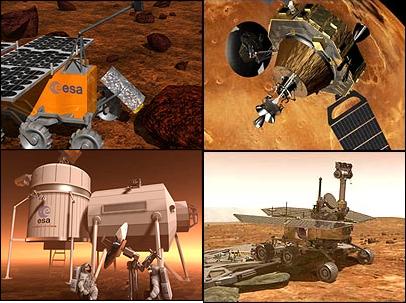ExoMars is part of the European Space Agency's Aurora program, which aims to explore the solar system in the coming decades. The plan could eventually bring humanity back to the moon and maybe even to Mars

In the picture: ExoMars will place an all-terrain vehicle on the surface * A plan to bring soil samples from Mars * Aurora may lead to manned missions to Mars
Three European consortia recently won contracts to design a mission to Mars to be launched from Earth in 2009. The ExoMars spacecraft will place a rover on the surface of the Red Planet to search for life.
The companies, belonging to the European Agency countries and Canada, were asked to research the technology needed for the mission. If the planning works well and the funding is also available, the consortia could get permission to start building ExoMars.
The industrial companies are led by Alanya Spazio (Italy), Alcatel Space (France) and EADS Astrium (France).
ExoMars is part of the European Space Agency's Aurora program, which aims to explore the solar system in the coming decades. The plan could eventually bring humanity back to the moon and possibly even to Mars, probably around 2030.
"This is a spectacular milestone for the Aurora program, since these are the first contracts dedicated to mission development rather than technical studies," said Bruno Gardini, Aurora Project Manager.
The European Space Agency also wants to plan studies to examine ways to bring rocks and soil from Earth for examination in the laboratory. The European Space Agency wants to launch a mission to the Red Planet to collect data in 2011. may encounter a risk of damage back to the atmosphere.
The consortium, led by Surrey Satellite Technologies from Britain and EADS Rocket Technologies from France, will plan how to send a cell into orbit around the Earth and then bring it down again, at speeds of up to 12.5 kilometers per second - to test technology needed for a full-scale mission.
"This is a hard problem we're going to try," says Andy Phipps of SSTL. "The goal of the research is to develop a component that has a very small risk of being damaged upon entering the atmosphere. It won't be an unmanned, scaled-down version of the Apollo spacecraft that brought the astronauts back from the moon. It is about a spacecraft weighing 50 kilograms."
The Europeans already have a mission on the way to Mars - the Mars Express that will attack Mars will reach it later this year and there it will release the Beagle 2 lander to the surface.
